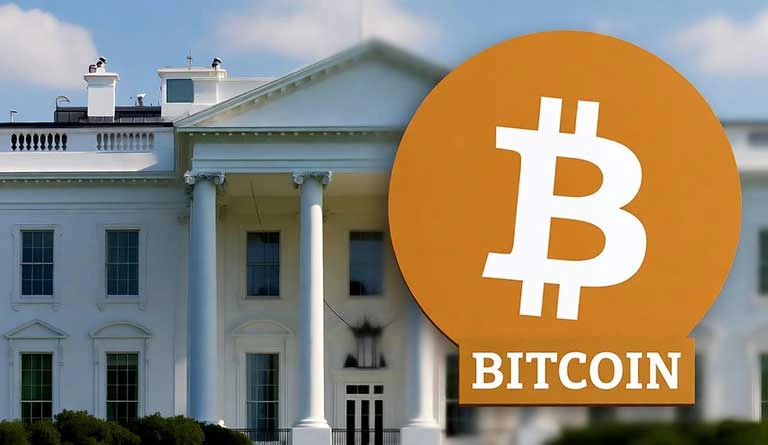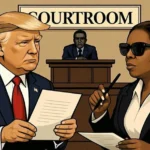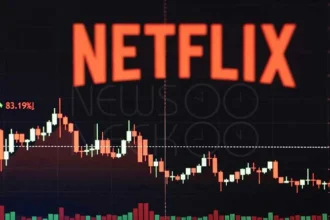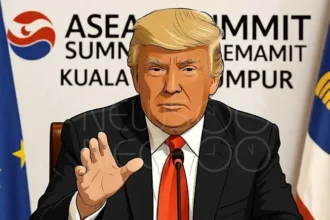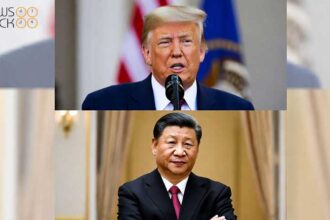The Hidden Hand
By Junaid Arif
In 2008, when the world’s biggest financial systems crumbled like sandcastles in a storm, something strange happened. Banks failed, jobs vanished, homes were lost, and yet, the earth still had enough for everyone. There was still enough food, iron, oil, and technology to keep humanity alive and thriving. So what caused the collapse?
The answer, it seemed, was not scarcity. It was paper—paper money.
Money that governments could print from thin air. Money that lost value every time a new batch rolled out of a machine. And out of the ashes of this global economic firestorm, an anonymous figure rose—a mysterious creator who would change the course of financial history forever.
His name, or rather, his pseudonym was Satoshi Nakamoto.
But what if Satoshi wasn’t who we think he is?
What if this “mystery man” was never a man at all, but an idea, a coded mask for something much bigger and far more powerful?
Could Satoshi Nakamoto actually be a creation of the U.S. Deep State?
The Birth of a Digital Messiah
Right after the 2008 global financial crisis, as Wall Street trembled and ordinary people suffered, a strange document appeared online. It was a nine-page paper titled “Bitcoin: A Peer-to-Peer Electronic Cash System.”
The author? Satoshi Nakamoto.
The paper proposed something revolutionary: a currency without banks, governments, or middlemen. Money that couldn’t be printed, forged, or manipulated. For the first time in history, humans could exchange value directly, digitally and freely.
It was like the invention of fire in a world trapped in darkness.
By 2009, Bitcoin officially went live. But something felt off from the beginning. How could one anonymous person, or a small group create such a powerful technology so fast, especially right after the financial collapse?
Was it really a coincidence? Or was it timing too perfect to be real?
You might Like it: The Hidden Business Behind Global Conflicts
The Dark Web and the First Test
Bitcoin first gained traction in the dark web, an underground part of the internet where anonymity ruled. People used it to buy and sell illegal goods, from drugs to data to weapons.
But here’s a question that should make anyone stop and think:
How did these underground users manage to treat Bitcoin like a real currency in its early days?
There were no major exchanges, no wallets, and no user-friendly apps. Yet somehow, Bitcoin was being used like cash in a world that had no system to support it.
Could it be that someone powerful, someone with resources was already testing it, building the hidden infrastructure to make it work?
The idea of “a currency that governments can’t control” sounds rebellious. But what if the very governments we thought Bitcoin was rebelling against were the ones nurturing it from the shadows?
Coinbase, Binance, and the Question of Permission
In the decade that followed, Bitcoin exploded in popularity. Suddenly, huge exchanges like Coinbase and Binance appeared, allowing people to trade digital currencies as easily as they traded stocks.
But one question keeps haunting economists:
How could Coinbase, a crypto company, operate legally inside the United States, the same country whose financial system depends on the U.S. dollar, if the government didn’t secretly approve it?
Think about it. The U.S. government is known for its strict control over money and markets. Yet, somehow, a digital currency created by an unknown entity was not only tolerated but also encouraged by major tech investors and companies.
If Bitcoin was truly an outsider’s creation, wouldn’t it have been banned from day one?
Instead, the opposite happened.
The 2024 Shock: Bitcoin Becomes an ETF
Then came January 2024—a moment that shook the financial world.
The United States officially accepted Bitcoin as an ETF (Exchange-Traded Fund), meaning investors could now trade it like gold or stocks.
Let that sink in. The most secretive digital currency, created by an anonymous figure, suddenly became a legal, regulated investment asset in the world’s biggest economy.
And it didn’t stop there. Big names jumped in.
- Elon Musk, founder of X, Tesla and SpaceX, invested billions. ( I remember in 2021, Elon Musk Puts bitcoin picture on his X (formerly known as twitter) account and bitcoin price spikes 20%)
- Michael Saylor, the former CEO of MicroStrategy, turned into one of Bitcoin’s loudest cheerleaders.
It’s almost poetic. Billionaires betting their wealth on a digital coin created by someone no one can find.
But ask yourself this: would the U.S. government, home of the dollar, the most powerful currency on Earth, ever allow something to threaten its supremacy unless it controlled it in some way?
The Mysterious 21 Million and Satoshi’s Hidden Fortune
Bitcoin was designed to be limited, only 21 million coins will ever exist. This limit is one of its selling points. But here’s a mystery that most people overlook: Satoshi Nakamoto himself owns over 1 million Bitcoins.
That’s roughly 5% of all Bitcoin that will ever exist.
At today’s value, that makes Satoshi one of the richest people in the world.
But if this person (or group) truly exists, why haven’t they touched their coins in over a decade? Why haven’t they sold, moved, or even commented?
It’s as if those coins are meant to stay untouched, like government gold reserves locked deep inside Fort Knox.
Could this be a sign that Bitcoin’s creator was never meant to be a person, but a symbol, a digital ghost created by a system powerful enough to control silence?
The Deep State Hypothesis
The term “Deep State” refers to the invisible network of intelligence agencies, defense contractors, financial institutions, and political insiders who shape global policies from behind the curtain.
If there’s anyone capable of launching a decentralized digital currency while keeping its creator a secret for 15 years — it’s them.
Bitcoin’s early design and cryptographic precision were decades ahead of normal research at that time. Its source code, encryption layers, and network security were so advanced that even major universities couldn’t fully understand its architecture in 2009.
Doesn’t that sound more like a government-grade project than the work of a random coder sitting in his basement?
And if the goal was to create a global digital reserve currency, immune to inflation and beyond the reach of rival governments, then Bitcoin fits that mission perfectly.
The American Strategy
Consider this timeline:
- 2008: U.S. economy collapses due to financial corruption.
- 2009: Bitcoin appears, promising freedom from corrupt banking systems.
- 2010–2020: Bitcoin spreads globally, collecting data, wallets, and users.
- 2024: The U.S. officially integrates Bitcoin into its financial system as an ETF.
If you connect the dots, it looks less like coincidence and more like strategic evolution.
The U.S. didn’t fight Bitcoin; it absorbed it.
Now, while other countries try to regulate or ban it, the U.S. holds the most Bitcoin-related patents, companies, and investors. Even Wall Street, once the enemy of digital currency, is now its biggest player.
If Satoshi Nakamoto truly was a Deep State creation, then the U.S. didn’t lose control of money; it just reinvented it under a digital mask.
The Unanswered Questions
- Why would the world’s most powerful government legalize an anonymous currency?
- Why is the supposed creator, Satoshi Nakamoto, completely silent for 15 years?
- How could one person create something so technologically perfect in such a short time?
- And if Bitcoin is truly decentralized, why do its biggest investors come from Silicon Valley and American hedge funds?
Each of these questions paints a picture that’s hard to ignore.
Bitcoin may have started as a rebellion, but like many revolutions in history, perhaps it was designed to look like one.
The Illusion of Freedom
To millions, Bitcoin represents financial freedom, a way to escape banks and governments. But true freedom comes from transparency, not secrecy.
When a system hides its creator, its early investors, and its real purpose, it becomes less like a revolution and more like a controlled experiment.
Maybe that’s what Bitcoin really is: a brilliant social and financial experiment conducted by the powerful to study how the world reacts to digital currency.
And maybe, just maybe, when the time comes, those hidden hands will step forward to use it—not for freedom, but for control.
The Truth Behind the Code
Fifteen years after Bitcoin’s birth, we still don’t know who Satoshi Nakamoto is. We only know that he, or it changed everything.
The banking world fears it. The rich invest in it. Governments pretend to regulate it. But nobody questions why it exists in the first place.
Perhaps Satoshi was never a man. Perhaps he was a project.
A code name.
A shadow created to make us believe in digital freedom while quietly teaching us to accept digital control.
And that’s the greatest irony of all.
Because in a world where paper money can be printed endlessly, maybe the real power lies not in creating money, but in creating belief.
Author: Junaid Arif
Date: 25 Oct, 2025
For more updates, Visit Newsneck


